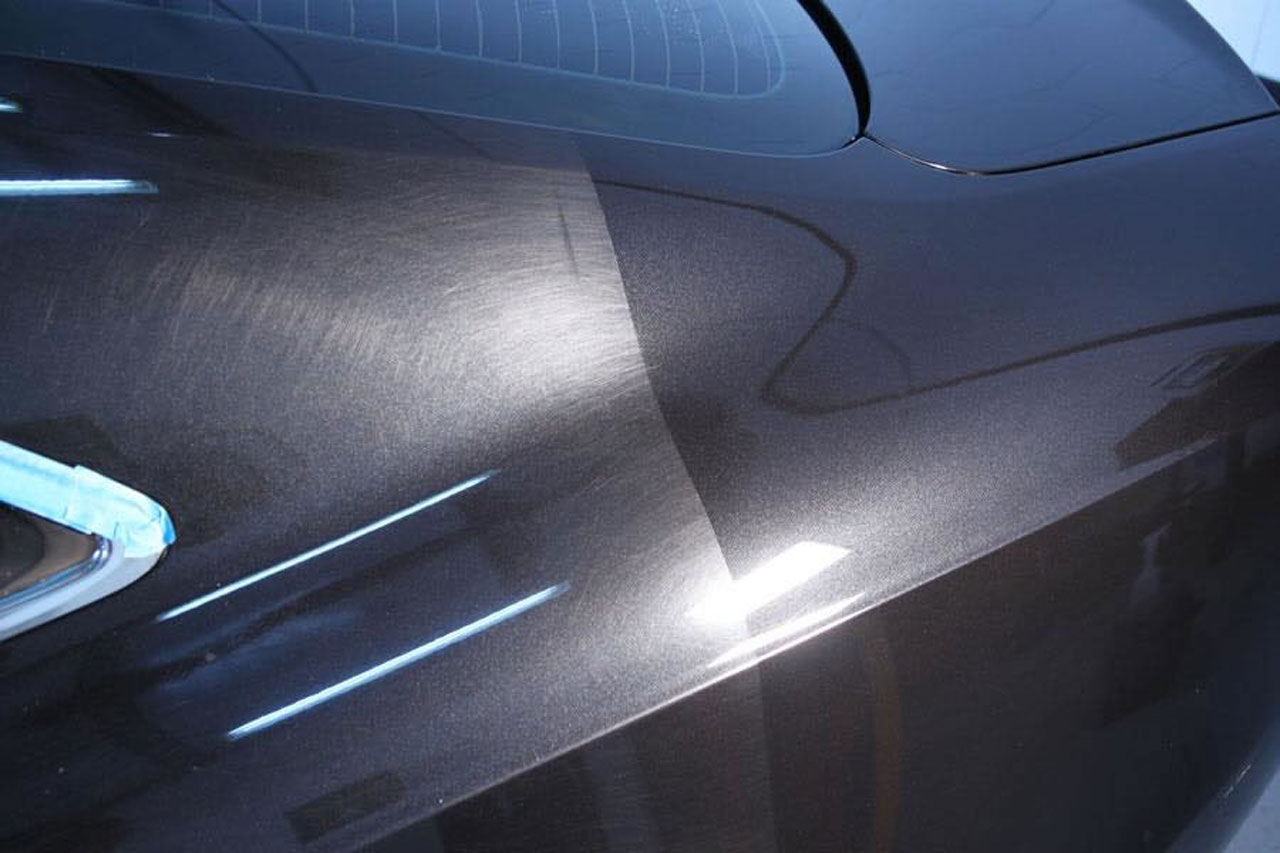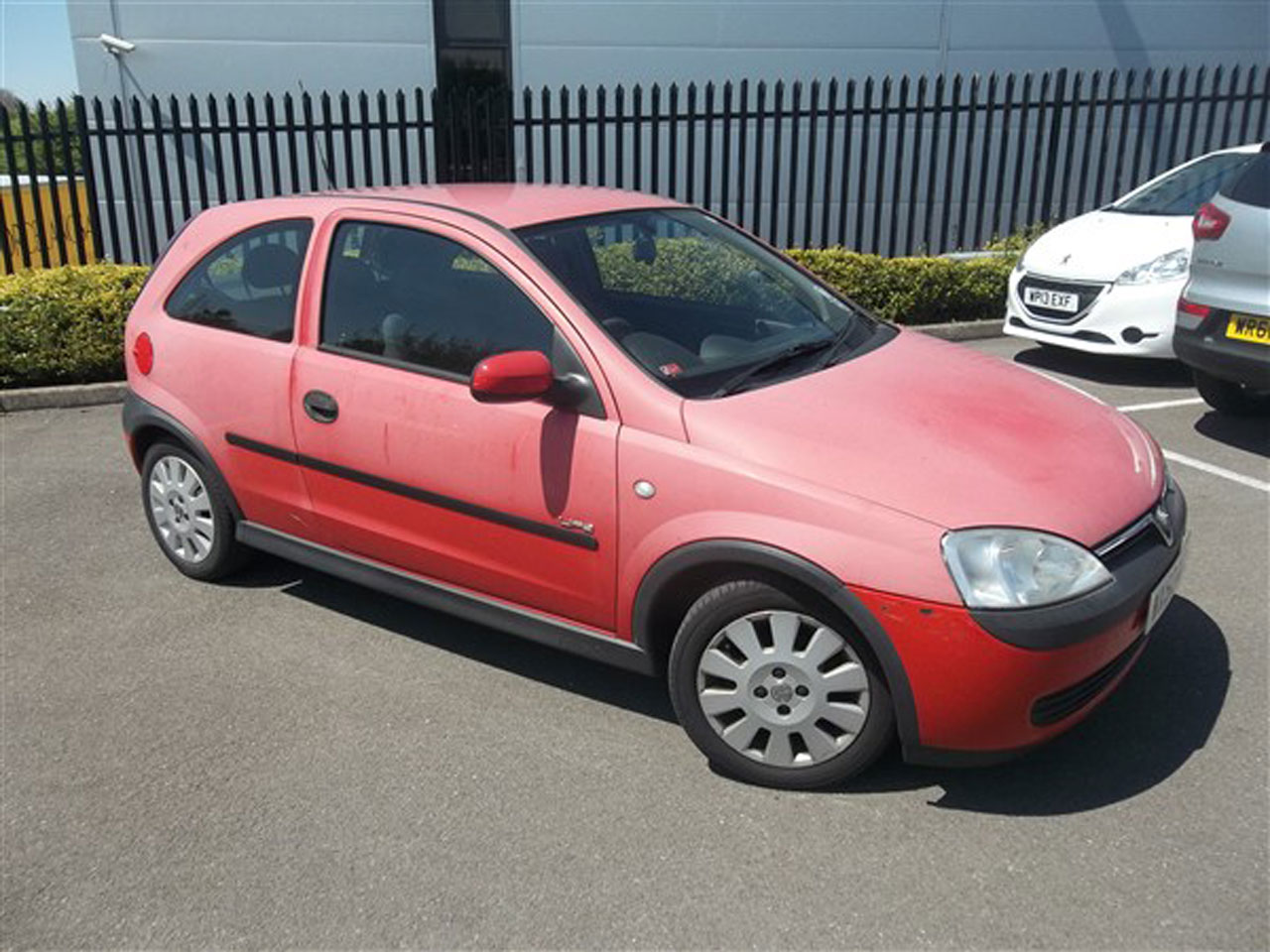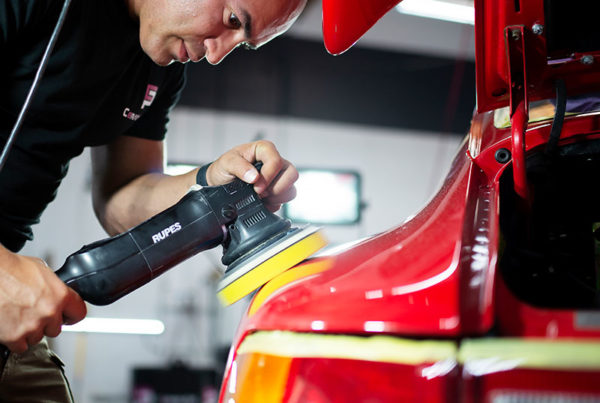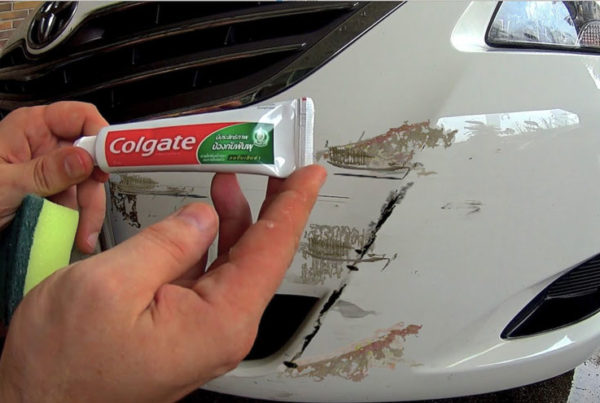If you were to walk around the parking lot of a popular grocery store, you will most likely see that many cars, SUVs, and trucks have car paint that is fading. Whether it be from excessive UV rays, sunlight exposure or simply cheap paint and clear coatings being used at the factory, vehicles nowadays are highly prone to faded car paint over time.
However, what would you say if I told you that the issue is not the paint on the car’s body – but the breakdown of the clear coating on top of that paint that causes fading. The clear coat does much more than simply seal the pigment from exposure to elements, UV rays, and other contaminants. With a glossy finish, the clear is what gives the paint the depth and shine. On a matte finish, it provides the richness – and if its damaged – it can be very costly to repair.
If the paint is fading on your car, then the question is what can you do to solve the problem? Below, we will go over the most common causes of fading car paint, the extent to which damage can occur, and some tips on how you can restore the original color and shine of your vehicle.
The Leading Cause of Faded Paint
Nowadays, cars are mass-produced on a large scale and thus the quality of materials such as the paint used is often not the highest quality possible. Back in the mid-20th century, car manufacturers focused on quality, ensuring that the cars would protect against damage both functional and aesthetic.
During this same time, car owners were more invested in taking care of their cars as well. Due to the materials available on the market, car owners placed an emphasis on spending time waxing and protecting their car’s surface more often, which they often did during down-time on weekends. This was also the era of the DIYer – simply because cars were easier to work on, less technically advanced, and most American males and many ladies too were mechanically inclined.
Nowadays, however, most vehicles (about 95%) come with single-stage paint and a clear coat finish. Despite most manufacturers following a detailed process of applying 7 to 10 coats of paint, treating it with heat, and scanning it with C.A.T. technology and equipment to find imperfections, the quality of the paint itself is poor.
The end result is a clear coat that is thin, light weight, and prone to damage due to exposure to multiple natural or chemical elements. Noted below are the four main contributors to faded paint.
UV Rays from the Sun
Even though spending time in the sun is great, if you stay exposed to the sun’s rays for too long you inevitably get sunburnt. Just like your skin, the paint on your car being exposed to the sun’s UV rays can cause damage. Even with a clear coat protectant, like sunscreen for your skin, UV rays are still potent enough to fade the paint on your car.
Most people think that the rays from the sun themselves cause fading, which is not true. The fading car paint is caused by the heat from the sun that builds up on the car’s surface. This is known as Infrared Radiation – or IR. But UV radiation also plays a role in paint degradation – specifically UV A and B. The constant bombardment of UV and IR develops heat that builds up the most on flat surfaces, such as your car’s hood and roof, and thus this is where the most fading occurs.
Corrosion
If you live near the coast of an ocean, then corrosion is another potential cause of the paint fading on your car. If the salt from the water stays on the surface of your car, then oxidation will occur and thus it will eat away at the clear coat. Most often, this oxidation causes the paint of your car to chip and peel easily. If this occurs, your only option would be to remove the old layer of paint entirely and repaint the vehicle.
Abrasive Cleaners and Chemicals
If you have read our article about car detailing, then you will recall the importance of using quality car detailing materials – namely, the soaps and cleaners and the cleaning and drying materials that are pH neutral in chemical composition. Using cleaners and degreasers that are pH negative (meaning more acidic) or pH positive (higher alkaline base) can break down clear coats, and lead to fading paint surface.
Also, the method you use for cleaning your car is important. For example, the two-bucket method is preferred to avoid having excessive debris damage or scratch your car’s clear coat. It is generally recommended to never use dish washing soaps or any cleaning product with harsh, abrasive chemicals on your car’s surface.
Additionally, it is always better to use paint protection products which have as few chemical agents as possible. Lastly, taking your car to automatic car washes too often can also harm the clear coat and contribute to fading.
Contaminants and Pollution
In addition to the obvious damage that can be caused by acid rain, there are other contaminants and sources of pollution that can cause your car’s paint to fade such as bird droppings, smog, industrial fallout, bug splatter, tree sap, pollen, and other chemical or acidic contaminants.
One that is often overlooked is industrial fallout – which is basically a fancy term for iron or ferrous based particles. Over a period of time, the iron particles like those found in brake dust will begin to penetrate the clear coating, and eventually bond in the coating. This can accelerate paint damage. To combat this, detailing your exterior with a industrial fallout remover spray – which is comprised of aggressive chemical compounds – or clay bar treatment is recommended, especially if you don’t have a good paint protection product.
Options for Fixing Fading Car Paint
Before you engage in fixing faded car paint, the first thing you need to know is the type of paint job you have. It’s simple – you either have a single-stage paint (which is a combined clear and pigment) or a dual-stage (pigment with clear coating applied on top). It’s also important to determine the type of paint used. Newer vehicles produced today use paints that are urethane-based, while custom paint jobs use lacquers and enamels.
Prior to restoring the faded paint on your car, you must find out which type of paint your car has, or if it has a clear coat. If your car has a clear coat, then you have some options for improving the depth and shine of your car’s paint manually. We discuss this further below. If, on the other hand, your car does not have a clear coat, your only options would be to either have the car professionally repainted or trade.
Here is how to tell if your car has a clear coat:
- Look at the paint code on the VIN plate
- Ask the dealership that you purchased the car from
- Test the surface with sandpaper or paint thinner
So, after you determine the type of paint, and whether or not you feel comfortable fixing your faded clear coat, there are a few ways of accomplishing this yourself. Now – to be clear, we’re not going to give you step-by-step instructions for each type of repair – as all faded paint issues are unique and there isn’t an all-size-fits-all solution. If you review the info below, and don’t feel 100% confident, defer to a professional detailer or auto body expert.
Fixing Faded Car Paint
If you know for sure that your car has a clear coat, there are two approaches you can take to restoring the paint.
DIY Small Section Repair: The first approach to restoring the paint on a car with a clear coat is to only repair the sections of your car’s surface that are faded. Most often, this will be the roof, hood, and maybe some other small sections throughout the surface.
DIY Complete Paint Restoration: The second approach is to go ahead and do a complete paint restoration, even if the entire surface is not faded.
Here are the steps to follow for a quick fix:
Step 1: Gather Supplies
Before you start fixing the faded paint on your car, make sure you have these supplies:
- Car Buffing Compound
- Car Washing Materials
- Several Polishing Pads and Microfiber Buffing Pads
- Electric Machine Buffer
- Paint Protection (i.e car polish, sealant, wax, or nano-ceramic coating – for small sections, go with carnauba wax, however, if you want to do the entire car, go with a ceramic coating)
- A Bucket of Water
Step 2: Wash the Car
After the supplies have been gathered, make sure to fully wash the areas of the car you are going to fix using the two-bucket method for washing.
Step 3: Remove Debris with a Clay Bar
After washing your car, you want to remove as many contaminants as possible from the surface. This is best done using a high-quality clay bar; see the attached video for a visual of how to do this successfully.
Step 4: Start the Buffing Compound
The buffing process for restoring faded paint is shown clearly in the video below. This is the general process to follow:
- Soak your buffing pad with water
- Apply buffing compound to the soaked pad
- Apply buffing compound to the faded area of the car’s surface
- Buff the impacted area
- Repeat the buffing process at least three times
- Clean off the buffer with clean water and inspect the paint
- Once the paint looks good, apply one final round of buffing compound
How to Protect from Future Paint Fading Issues
If you’re going to invest the time, money, and effort to fix faded paint, or want to avoid this problem completely, it’s a good idea to use a high-quality paint coating. The best product for blocking UV rays, chemicals, and the other contaminants that lead to paint fading is a nano ceramic coating.

A ceramic coating is a proven paint protection solution. However, it shouldn’t be assumed that you don’t need wash it frequently. Every two weeks is recommended.
Ceramic Pro 9H nano ceramic coating is a professional-grade, semi-permanent layer of flexible glass, that can be applied to clear coats, plastics, glass, wheels, carbon fiber, vinyl wraps, and paint protection film. You can have it installed on all exterior parts of your vehicle – to reduce fading on all these materials.
This increases your vehicle’s resale value, keeps it cleaner for longer periods, and most importantly – keeps it protected from those harmful agents that lead to fading.
If you’d like to learn more about Ceramic Pro 9H coatings for cars, click the button below to request a free estimate.








